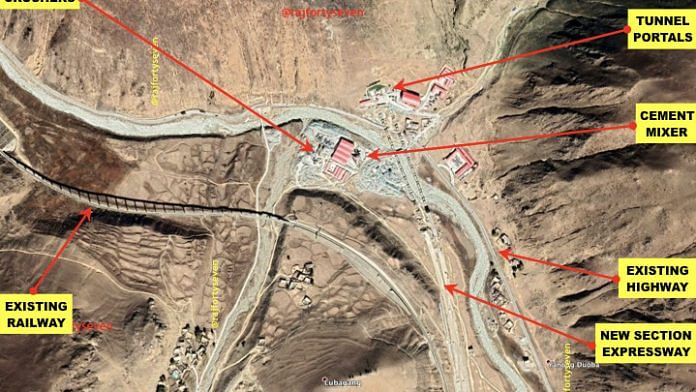China is quickly building G-6 expressway from Xining to Lhasa, to connect Tibet’s capital to Beijing. This could have military implications for India.
New Delhi: In the 18 months since the Doklam stand-off with India, China has started or accelerated various road and rail projects in Tibet, especially near the Indian border.
The latest example of this is a new high-speed expressway being constructed from Xining in Qinghai province to Lhasa, the capital of Tibet.
As reported earlier by ThePrint, the People’s Liberation Army has modernised its theatre-level distribution with an automated system of supply management, and also carried out actual on-ground trials needed to verify timelines, validate concepts and operationalise plans.
The lessons learnt from these trials probably suggested the need for high-speed road connectivity with Tibet.
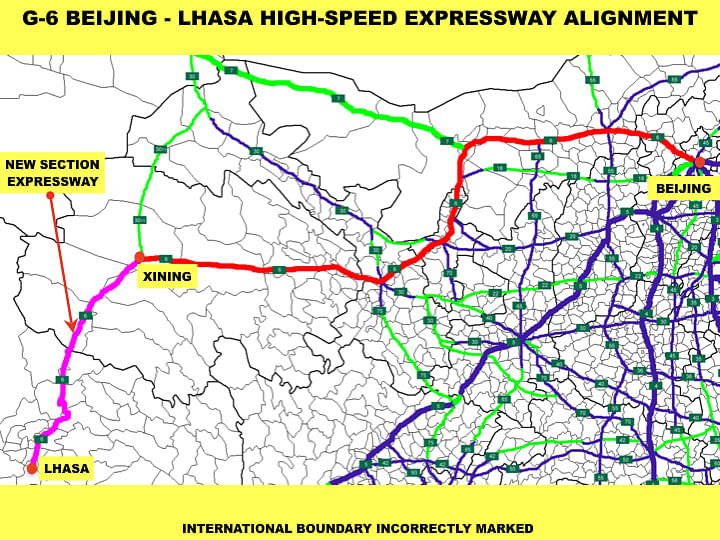
Also read: China gives big push to road & rail infrastructure in areas bordering India
The latest satellite images from 18 December 2018, accessed by ThePrint, indicate that the 3,725 km-long G-6 — also known as the Beijing-Tibet expressway or the Beijing-Lhasa high-speed expressway — is undergoing construction at a fast pace.
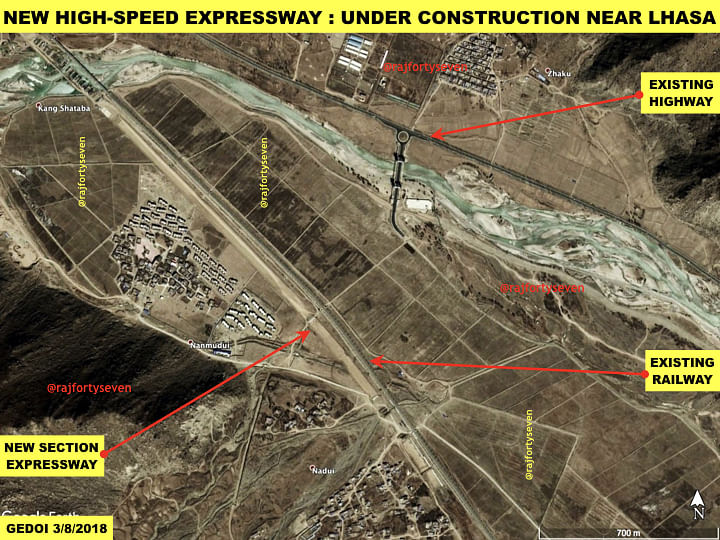
The expressway is already complete between Beijing and Xining.
The new stretch of 1,897 km from Xining to Lhasa includes a 546-km section beyond the Tanggula pass in Tibet. It was probably planned in early 2018, and construction began in mid-February.
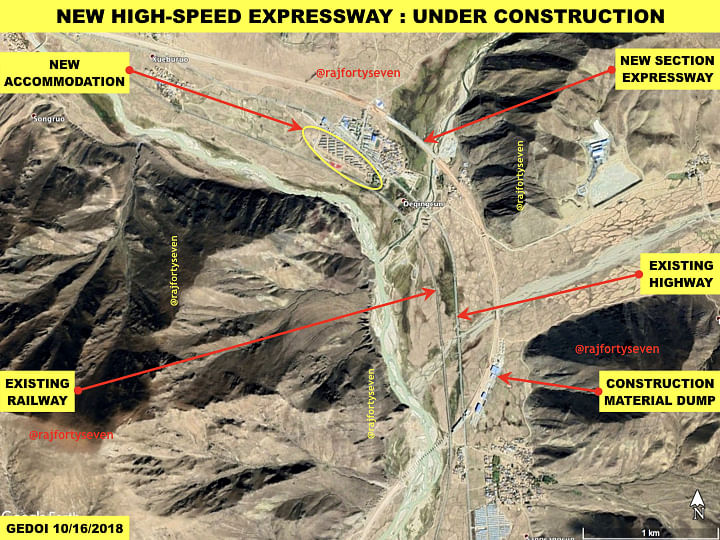
The width of the graded, raised portion of the road under construction varies from 30-45m, indicating that this expressway would probably be a six-lane road.
All the tunnels being constructed on the Tibetan side are twin tunnels — each almost 15-20m wide.
Military implications
The new road from Xining to Lhasa has enormous strategic implications for the PLA, and obviously, even for the Indian Army.
PLA logistics department convoys would be comfortably able to cover the distance of 3,725 km from Beijing to Lhasa in four days or less during emergencies.
The expressway would ensure a very smooth flow of convoy traffic, without any bottlenecks or any additional burden on manpower.
Construction material dumps
A large number of construction material dumps can be observed along the road, especially near intersections and river crossings. These dumps are used to build trusses and other concrete blocks for bridges, roads and culverts.
These dumps typically consist of crusher, mixer and compressors supported by heavy duty cranes, vehicles and storage barracks.
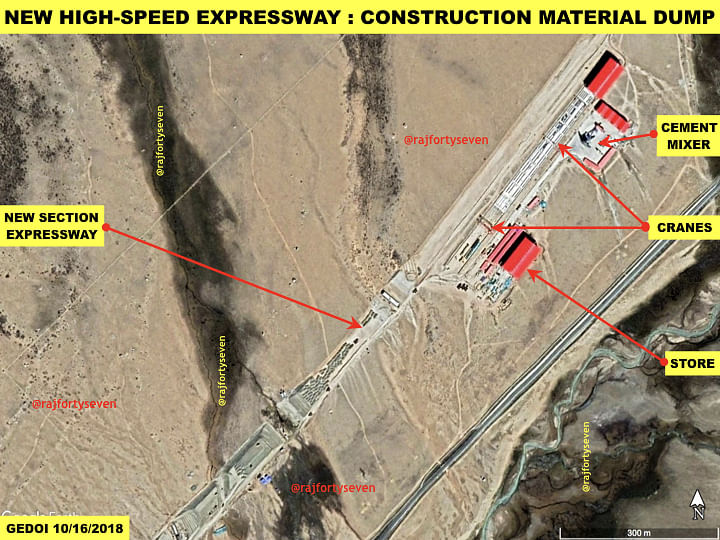
Service stations
Expressways in China are typically served by stations that feature petrol pumps, food and other amenities required for long-distance travel.
Such stations would certainly be planned, but cannot observed on the Tibet stretch so far.
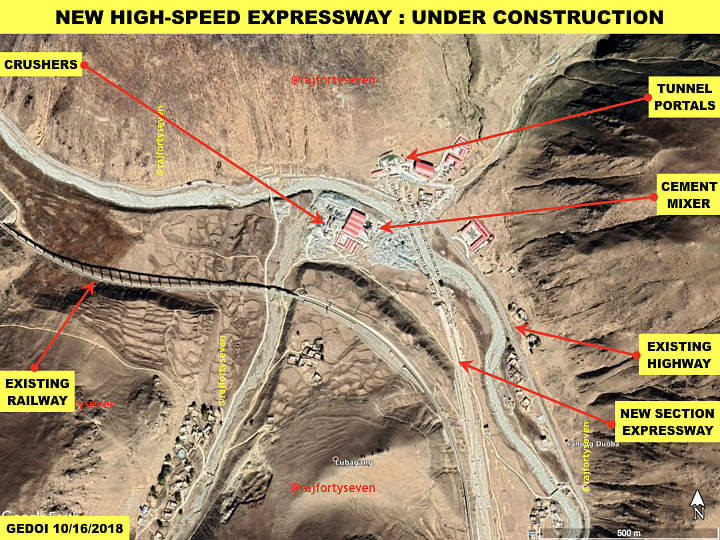
Speed of construction
The speed of construction of this high-speed expressway is surprisingly very fast. The pace indicates the urgency with which the Chinese PLA requires its completion.
Hectic activity is observed all along the route, except major cities and towns, where only T-junctions are seen.



